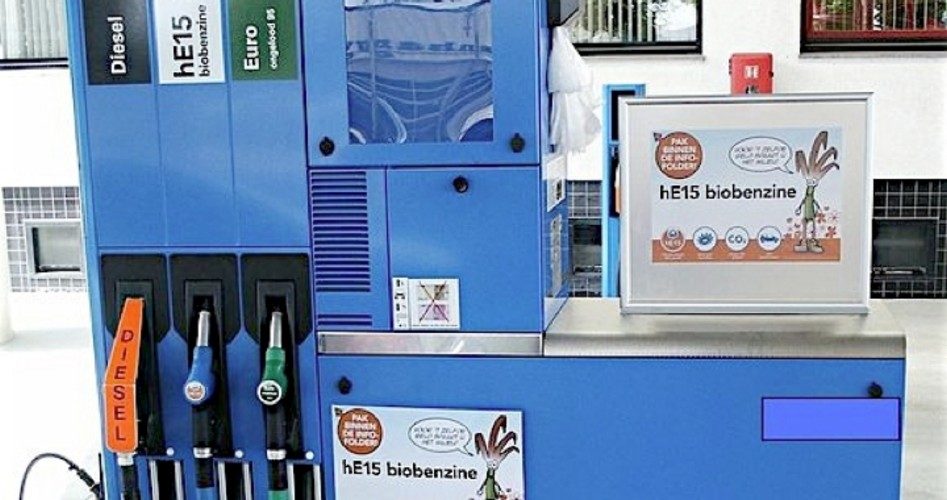
Acting on the Obama administration’s inexorable push for alternative fuel, a gas station in Lawrence, Kansas, has become the first in the nation to offer E15 fuel, a blend containing 15 percent ethanol and 85 percent gasoline. In addition to the Zarco 66 station in Lawrence, a second retail station in Ottawa, Kansas, is also preparing to offer the more-concentrated hybrid fuel sometime in the near future.
On June 8, the Environmental Protection Agency (EPA) gave a final ruling on the sale of E15, approving the fuel for all cars with a model year of 2001 or later. Under current market conditions, the blend with higher ethanol concentration will cost less per gallon than the traditional blend of 10 percent ethanol, or E10, as well as other options that are strictly petroleum-based. However, some experts say the savings are illusory, because a gallon of ethanol assumes only two-thirds as much energy as a gallon of petroleum, resulting in a significantly inferior fuel economy.
“By a margin of three to one, Americans are clamoring for real choices at the pump. The roll out and adoption of E15 is the first step in delivering Americans the choice they want and deserve,” asserted Bob Dinneen, president and CEO of the Renewable Fuels Association. “E15 has been the most vigorously tested fuel to be approved by the EPA. Ethanol has long proven itself to be a safe and effective fuel for consumers, and E15 will be no exception.”
Scott Zaremba, owner of the Zarco 66 station, blends the fuel options on site, a process that requires tens of thousands of dollars in station upgrades. But Zaremba claims the enhancements are well worth the cost. “Alternatives to gasoline are critically important to our nation’s energy future and Americans deserve to have a choice of cost-competitive fuel at the pump,” he contended. “With the help of the Kansas Corn Commission, East Kansas Agri-Energy, and the Renewable Fuels Association, we are pleased to be the first to offer consumers real choice at the pump in the form of E15 ethanol fuel.”
Intended to curb U.S. dependence on foreign oil — by using a greater concentration of U.S.-produced ethanol — E15 fuel has been advertised as a chief component to stretching U.S. fuel supplies. Under federal rules, most fuel currently offered today has a blend containing 10 percent ethanol.
Of course, ethanol production has become woven into the U.S. political system, as farmers and ethanol producers have become lavish beneficiaries of government subsidies. Leaders in these industries are prominent constituents, spending countless dollars on congressional lobbying with the goal of achieving more government handouts and favorable regulations.
“America’s farmers, together with America’s ethanol producers, have risen to the challenge to provide a safe, reliable, and growing source of renewable fuel,” said Jere White, Executive Director of the Kansas Corn Commission. “E15 and increasingly higher ethanol blends will reduce our dependence on imported oil, create domestic jobs that cannot be sent overseas, and leave a cleaner environment for generations to come.”
However, despite the EPA’s favorable ruling on the use of E15, most automakers are warning customers to avoid the fuel, asserting that it might not be safe for the engines. In fact, automakers have been so adamant in their opposition that some new Toyotas have their gas tank caps embossed with an “E15-E85” sticker covered with a red circle and a slash.
Ford, Chrysler, General Motors, and a slew of other manufacturers also warn against the use of E15, even going so far as to void the warranty on any vehicle that uses the fuel. “Our vehicles were designed to operate on E10,” asserted Cynthia Williams, environmental policy manager for Ford. “That’s what the consumer should be using.”
A two-year study released this spring by the Coordinating Research Council examined eight different engines of vehicles with model years of 2001 through 2009, with two vehicles for each engine tested (one on E15 and one on traditional gasoline). The study monitored conditions such as engine emissions, cylinder compression, valve wear and leakage, and emissions-control diagnostics.
Some of the E15 engines encountered significant side effects, including misfiring, damaged valves, reduced performance, and, ironically, lower fuel economy. Overall, the study’s authors issued a verdict indicating that E15 is not a safe alternative fuel for today’s automobiles.
One would think that opposition from the automobile market itself — that is, those who actually manufacture the vehicles — would be enough to raise red flags over the use of E15. The Association of Global Automakers, for example, is a coalition of car and light-truck manufacturers whose sales make up nearly half of the U.S. auto market, and their ruling on E15 is rather explicit:
“Our goal is to ensure that new alternative fuels are not placed into retail until it has been proven they are safe and do not cause harm to vehicles, consumers, or the environment,” affirmed Mike Stanton, president and CEO of the association. “The EPA should have waited until all the studies on the potential impacts of E15 on the current fleet were completed.”



